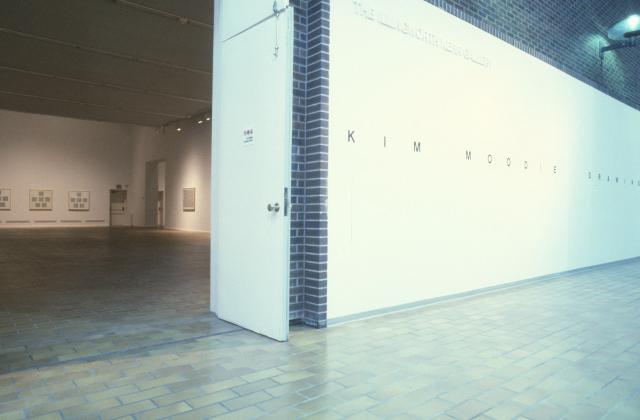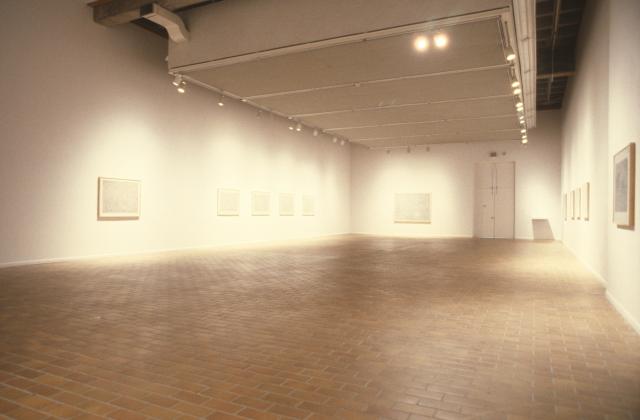
Exhibition
1 Dec 1994 - 22 Dec 1994
Illingworth Kerr GalleryKim Moodie: Drawings
Kim Moodie's world is indeed a strange and fabulous space. All at once, the dense tangles of his drawings seem to snare the essence of myth, the adventures of Boy's Own stories, the ironies of history and the layered intricacies of postmodernism. They give off a whiff of the alchemist's lab. Scanning their surfaces can be as dizzying as rapid channel surfing.
It makes good sense that this Ontario artist, born in 1951, is a child of the television era. The grandiose tag for The History Channel, "all of history, all in one place," could aptly describe his drawings' content. Images from disparate categories, cultures, historical periods and fictional genres are scrambled together on one plane and homogenized by the artist's style. And yet, Moodie's rugged graphic line recalls the look and technology of early printed books illustrated by woodcuts and wood engravings.
His images invoke the age of discovery with Columbus-like figures, encounters and conflicts. Painters of large, fantastic vision like Bosch, Brueghel and Ensor come to mind. But what Moodie is after is the opposite of grandiosity or even grandness. In the drawings, native men and conquistadors exist side by side with astronauts and Space Ships, man-made monsters with soldiers and torturers, mermaids with mercenaries, spears with fire-spitting guns, hand grenades and hypodermic needles. This is a saga of civilization and imperialism in which nobody wins.
It goes round and round like a record that's stuck. The human condition is implicated. So is language, as though nothing will change until we can invent a new language with which to describe ourselves and what happens to us. The drawings present themselves not as historical allegories but as an allegory of history. From a distance, a Moodie drawing might be a field of tone, like charcoal rubbed into the paper, a grey frog, perhaps, or primal matter. Step closer and the lines begin to crystallize on the paper. The more you look, the more you see. Few things are as fast as a quick glance, and the artist slows you down, intentionally. He wants to hold you close and turn you into a reader of thoughts written out in images. His drawings hint at narratives, as if they were texts made of symbols gathered from across the history of the world.
The central image is often a ship (galleon, freighter, ark) travel is time travel, not chronologically in a line but in every direction at once, as though history were a vast network of interconnected events existing simultaneously in time.
Every drawing is different and every drawing looks almost the same, each one an overall pattern. You have to keep taking your bearings so as not to get lost in either chaos or abstraction. In the claustrophobia that this prospect presents, there would appear to be both a moral and a caution. The moral could be something along the lines of “the more things change, the more they stay the same.” The caution in an era of sweeping special and technological change, could be that the moral is true.
- Review by Nancy Tousley, Calgary Herald, 1994.




